Transylvania is a historical and geographical region in south-eastern Europe, most of which is now part of Romania. Transylvania has a rich and diverse culture, nature and history that attracts many visitors.
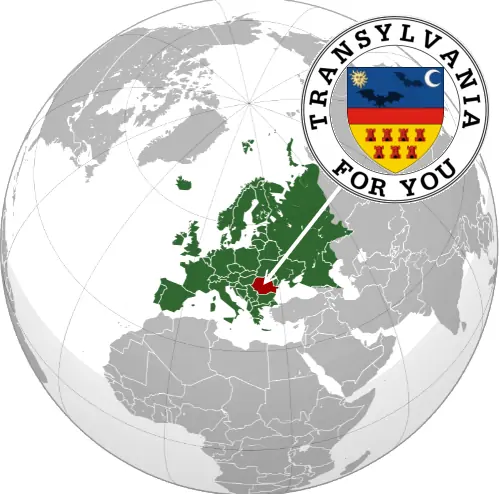
Transylvania on a world map.
Transylvania is located in the centre of Romania and is surrounded by the Carpathian Mountains. It borders the regions of Moldavia, Wallachia, Banat, Crișana and Maramureș. The most important rivers are the Danube, the Tisza, the Mureș, the Olt and the Someș. The largest cities are Cluj-Napoca, Brașov, Sibiu, Târgu Mureș and Alba Iulia.
In ancient times, Transylvania was inhabited by the Dacians and the Romans, who founded the province of Dacia here. After the Romans withdrew, the area was invaded by various peoples such as the Goths, the Huns, the Avars, the Bulgars, the Pechenegs, the Cumans and the Mongols.
In the 9th century, Transylvania became part of the Hungarian Empire and was colonised by the Szeklers, a Hungarian tribe. In the 12th century, German settlers, known as Transylvanian Saxons, were invited by the Hungarian king to colonise and defend the land. They founded numerous towns, villages and fortified churches, which have been preserved to this day.
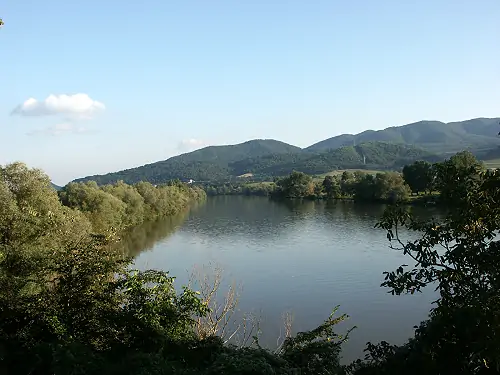
The river Mureș in Transylvania
In the 16th century, Transylvania became an autonomous principality under the sovereignty of the Ottoman Empire. It experienced a heyday of culture, religion and politics, which was characterised by personalities such as Johannes Honterus, Stephan Bocskai, Gabriel Bethlen and George I Rákóczi.
In the 17th and 18th centuries, Transylvania was conquered by the Habsburgs and incorporated into the Austrian Empire. It became a centre of resistance against Habsburg rule, led by personalities such as Michael the Brave, George II Rákóczi and Horea.
In the 19th century, a Romanian national movement emerged that sought the unification of Transylvania with the Kingdom of Romania. This was realised in 1918 after the First World War.
During the Second World War, Transylvania was partially ceded to Hungary, but was returned to Romania in 1945. After the war, Transylvania experienced a period of industrialisation, urbanisation and socialist transformation under the communist regime.
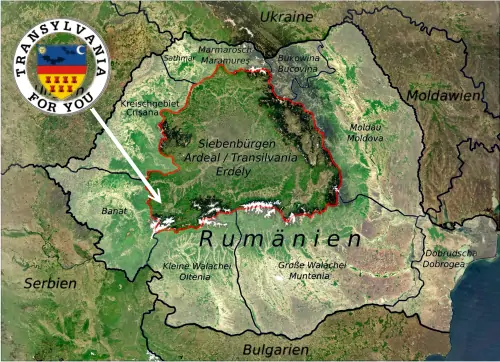
After the Romanian Revolution of 1989, Transylvania became a region of democracy, diversity and development.
Transylvania is one of the most dynamic and attractive regions in Romania today. It has a strong economy based on agriculture, industry, trade, tourism and services. It has a high quality of education and research, guaranteed by renowned universities, academies and institutes.
Transylvania has a vibrant culture that is promoted by various festivals, events, museums, theatres and galleries. It has a diverse population consisting of Romanians, Hungarians, Germans, Roma, Serbs, Ukrainians, Armenians and other ethnic groups. Transylvania has a rich tradition characterised by folklore, music, art, architecture, cuisine and religion.
Transylvania is a favourite destination for tourists from all over the world who want to discover its beauty, charm and heritage. Transylvania is known for its picturesque landscapes, medieval towns, castles and fortresses. The most important sights include:
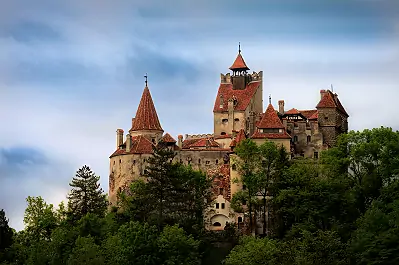
Bran Castle, also known as Dracula's Castle
- Bran Castle, also known as Dracula's Castle, is a medieval fortress associated with the legend of the famous vampire.
- The UNESCO citadel in Sighisoara and the Saxon villages with fortified churches that preserve the medieval heritage of the German settlers
- The Gothic castle of Hunedoara, Corvinilor Castle, which is one of the largest and most impressive castles in Romania, associated with many legends and stories.
- The spectacular (and healthy!) Turda Salt Mine, which is an old mine that has been converted into a modern leisure centre offering various attractions such as a lake, a Ferris wheel, a golf course and a spa.
- The Alba Carolina Citadel, an impressive fortress that symbolises the history and identity of the Romanian nation.
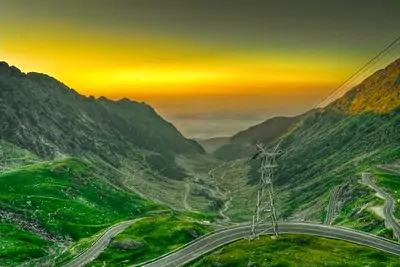
The Transfăgărășan Road, Cristi B
- The Transfăgărășan Road, an exciting drive with great views, is one of the most spectacular roads in the world, crossing the Carpathian Mountains and offering breathtaking scenery.
- The Transylvanian towns and villages, which offer a mix of tradition and modernity, characterised by architecture, culture, gastronomy and atmosphere.
The most famous are Cluj-Napoca, Brașov, Sibiu, Târgu Mureș, Alba Iulia, Sighișoara, Biertan, Viscri, Sinaia and Bran.
- The Transylvanian activities that offer a variety of ways to enjoy nature, culture and adventure. Among the most popular are hiking, cycling, skiing, horse riding, climbing, rafting, bear watching, caving, paragliding and zip-lining.
Cities such as Sibiu, Cluj-Napoca and Brasov attract visitors with their well-preserved historical architecture and cultural events. The region also offers opportunities for outdoor activities such as hiking, skiing and nature exploration.
Transylvania has different names in different languages, reflecting its geographical location or its historical significance. The Romanian name is Ardeal or Transilvania, the Hungarian name is Erdély, the German name is Siebenbürgen, the Greek name is Τρανσυλβανία, the Turkish name is Erdel, the Slovakian name is Sedmohradsko and the English name is Transylvania.
The name Transylvania literally means "beyond the forest" and refers to the wooded mountain range that separated the region from the rest of Hungary. The name Transylvania refers either to the seven towns founded by the German settlers or to the seven administrative units known as chairs.
The wild nature of Transylvania is one of the biggest attractions of this region, which is home to a variety of ecosystems, species and landscapes.
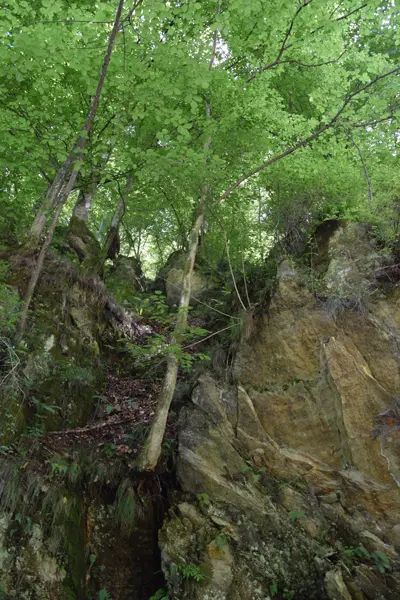
Rugged wilderness and almost untouched forests
Transylvania is known for its unspoilt forests, which are surrounded by the Carpathian Mountains and are home to wild animals such as bears, wolves, lynx, deer and wild boar. These forests are also rich in plants, fungi, lichens and mosses, which play an important role in the climate, soil and water quality.
Transylvania also has many rivers, lakes, swamps, caves and grasslands that are highly biodiverse and provide various habitats for birds, fish, amphibians, reptiles and insects. Nature conservation in Transylvania is a challenge that requires co-operation between local communities, authorities, NGOs and researchers.
Some of the threats to wild nature in Transylvania are deforestation, overgrazing, pollution, illegal hunting, climate change and tourism. To combat these threats, various measures have been taken, such as the creation of national parks, nature reserves, Natura 2000 sites and biosphere reserves, the promotion of sustainable practices, raising public awareness, conducting scientific studies and supporting local initiatives.
Some of the most famous nature reserves in Transylvania are:
The Piatra Craiului National Park, which encompasses a mountain range with spectacular limestone formations, gorges, caves and meadows that is considered one of the most beautiful in Romania.
The Retezat National Park, which is the oldest protected area in Romania and is home to more than 80 glacial lakes, 1190 plant species and 185 bird species.
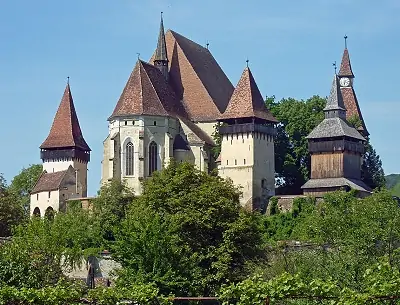
Biertan church castle (Biertan)
The Danube Delta Biosphere Reserve, which is the second largest and best preserved river delta in Europe and offers an extraordinary variety of habitats, plants and animals, including pelicans, cormorants, herons, storks and otters.
The Făgăraș Mountains, which are the highest and longest mountains in Romania and offer a breathtaking landscape of peaks, valleys, glaciers, waterfalls and lakes, known as the "Transylvanian Alps". Foundation Conservation Carpathia is an organisation dedicated to the conservation and restoration of the natural ecosystem of the Carpathians.
The Cheile Turzii Nature Reserve, which comprises an impressive gorge with steep rock faces, caves, fossils and a rich flora and fauna that is appreciated by hikers, climbers and nature lovers.
Transylvania has a rich and varied literature, characterised by different authors, genres and themes. The best-known works that have Transylvania as their setting or inspiration include:
- Dracula, the famous novel by Bram Stoker, which tells the legend of the vampire Count Dracula, who comes from Transylvania and travels to London to find new victims
- The Transylvanian Trilogy, the famous series of novels by Miklós Bánffy describing the lives and loves of the Hungarian aristocracy in Transylvania on the eve of the First World War.
The Night of Păltiniș, the famous novel by Gabriel Liiceanu, which recounts the philosophical conversations between the Romanian philosopher Constantin Noica and his students in a Transylvanian village during the Communist dictatorship.
The Fugue of Death, the famous poem by Paul Celan, which describes the horrors of the Holocaust that he experienced as a Jew in a Transylvanian labour camp.
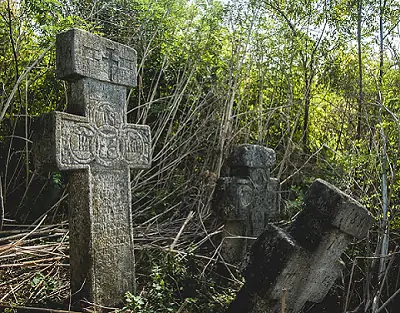
Transylvania is surrounded by the densely forested mountains of the Carpathians like a huge castle created by nature. This region is home to medieval towns and unspoilt villages.
But behind this idyllic facade lies a dark secret that terrifies the locals. For Transylvania is also home to vampires, the sinister creatures of the night that feed on the blood of the living.
What sounds like fantasy and fiction is actually a real place, a region in central Romania. In the Transylvanian forests, there are secrets and magic that seem to be out of this world. Faint lights glow between the trees, eerie, whispering voices can be heard on the wind. Travellers who have ventured too deep into the forest have never been seen again...
The Gothic cemeteries full of eerie crypts and tombs may harbour the remains of undead creatures. The mysterious and magical symbols on the tombstones show the fear of the population and their attempt to block the path of the sinister, cruel beings into our world.
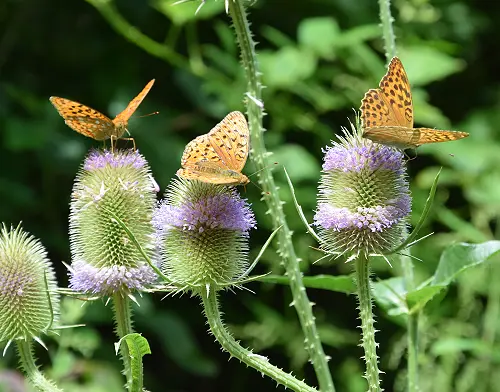
You are supporting a special nature and animal conservation project in Transylvania. We plant native deciduous trees - original tree species such as robinia, oak and maple. We are actively committed to the protection of flora and fauna. The land for our land donations may not be used commercially.
This means that trees, shrubs, grasses, flowers, herbs, mosses and fungi can develop undisturbed. At the same time, the fauna also develops with numerous different species: Insects, reptiles, amphibians as well as small mammals and birds find a safe habitat here.
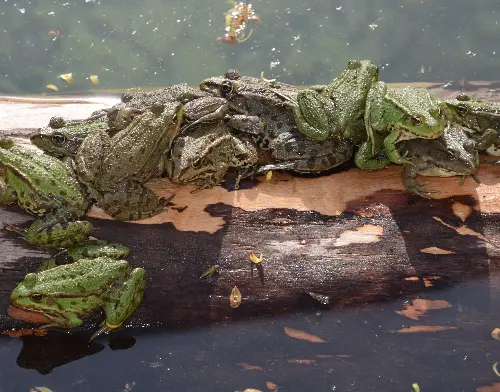
The property's own spring and the stream on the property round off this habitat. They provide undisturbed access for all the fauna from the surrounding area and the opportunity to obtain fresh, clear spring and mountain water. This is particularly important during the long, hot and dry Transylvanian summers.
Roe deer, deer, foxes, wild boar, badgers, martens, frogs, toads and amphibians, small rodents and reptiles such as lizards and slow worms from the surrounding woodland areas make use of this opportunity and regularly visit the fresh water source.
This project actively contributes to the preservation and expansion of valuable ecosystems.
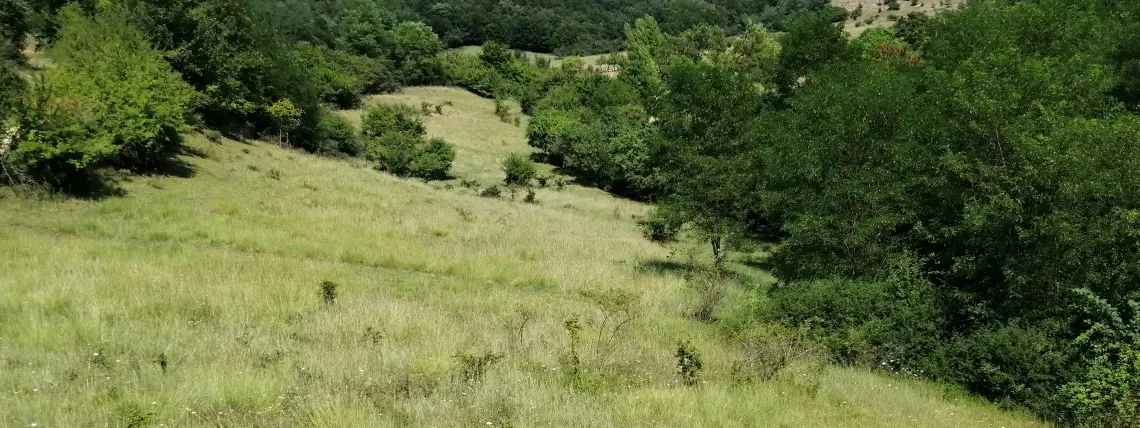
The land gifts are located on this property.
Don't wait any longer and take your own piece of Transylvania!